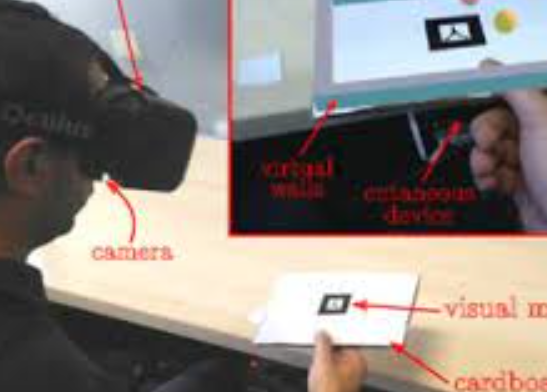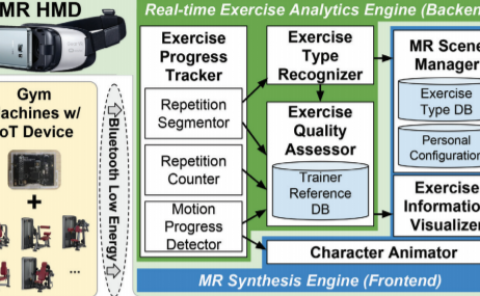Evaluation of Wearable Haptic Systems for the Fingers in Augmented Reality Applications
PubDate: April 2017
Teams: Sapienza Universita di Roma;CNRS;Aarhus University;University of Siena
Writers: Maurizio Maisto; Claudio Pacchierotti; Francesco Chinello; Gionata Salvietti; Alessandro De Luca; Domenico Prattichizzo
PDF: Evaluation of Wearable Haptic Systems for the Fingers in Augmented Reality Applications

Abstract
Although Augmented Reality (AR) has been around for almost five decades, only recently we have witnessed AR systems and applications entering in our everyday life. Representative examples of this technological revolution are the smartphone games “Pokémon GO” and “Ingress” or the Google Translate real-time sign interpretation app. Even if AR applications are already quite compelling and widespread, users are still not able to physically interact with the computer-generated reality. In this respect, wearable haptics can provide the compelling illusion of touching the superimposed virtual objects without constraining the motion or the workspace of the user. In this paper, we present the experimental evaluation of two wearable haptic interfaces for the fingers in three AR scenarios, enrolling 38 participants. In the first experiment, subjects were requested to write on a virtual board using a real chalk. The haptic devices provided the interaction forces between the chalk and the board. In the second experiment, subjects were asked to pick and place virtual and real objects. The haptic devices provided the interaction forces due to the weight of the virtual objects. In the third experiment, subjects were asked to balance a virtual sphere on a real cardboard. The haptic devices provided the interaction forces due to the weight of the virtual sphere rolling on the cardboard. Providing haptic feedback through the considered wearable device significantly improved the performance of all the considered tasks. Moreover, subjects significantly preferred conditions providing wearable haptic feedback.



